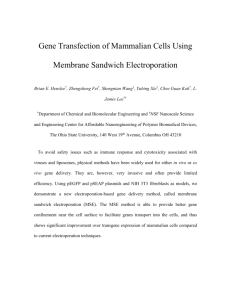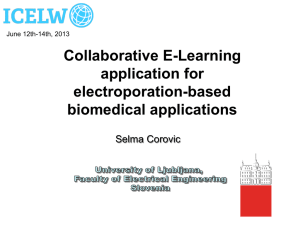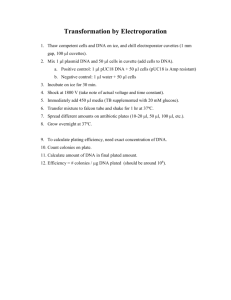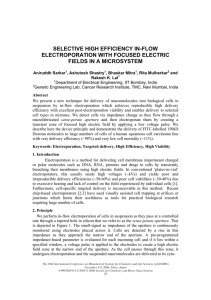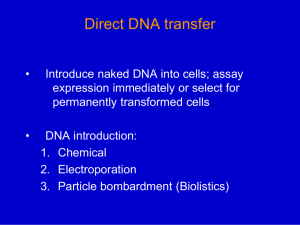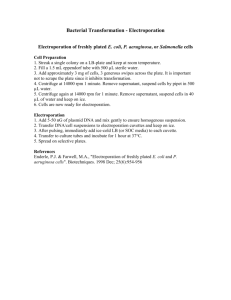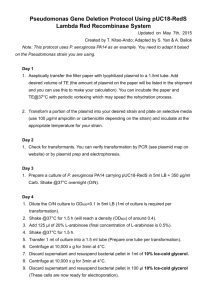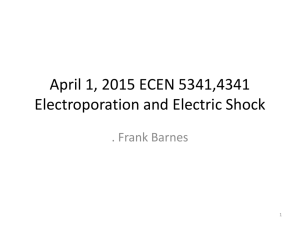Electroporation - UCSF Animal Care and Use Program
advertisement
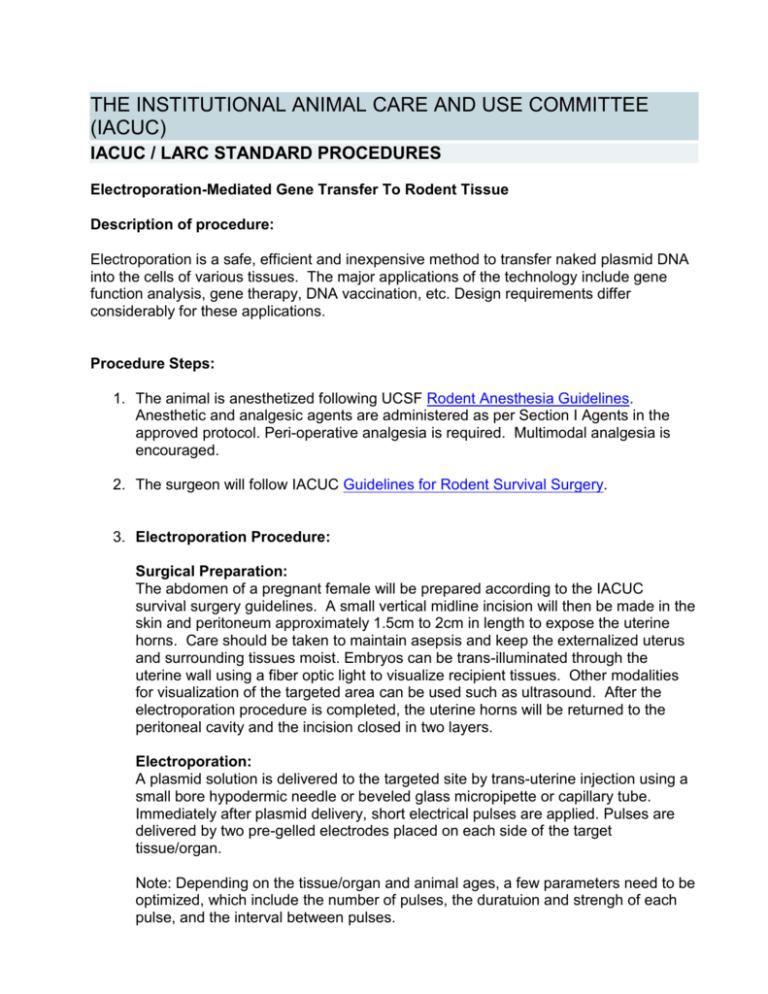
THE INSTITUTIONAL ANIMAL CARE AND USE COMMITTEE (IACUC) IACUC / LARC STANDARD PROCEDURES Electroporation-Mediated Gene Transfer To Rodent Tissue Description of procedure: Electroporation is a safe, efficient and inexpensive method to transfer naked plasmid DNA into the cells of various tissues. The major applications of the technology include gene function analysis, gene therapy, DNA vaccination, etc. Design requirements differ considerably for these applications. Procedure Steps: 1. The animal is anesthetized following UCSF Rodent Anesthesia Guidelines. Anesthetic and analgesic agents are administered as per Section I Agents in the approved protocol. Peri-operative analgesia is required. Multimodal analgesia is encouraged. 2. The surgeon will follow IACUC Guidelines for Rodent Survival Surgery. 3. Electroporation Procedure: Surgical Preparation: The abdomen of a pregnant female will be prepared according to the IACUC survival surgery guidelines. A small vertical midline incision will then be made in the skin and peritoneum approximately 1.5cm to 2cm in length to expose the uterine horns. Care should be taken to maintain asepsis and keep the externalized uterus and surrounding tissues moist. Embryos can be trans-illuminated through the uterine wall using a fiber optic light to visualize recipient tissues. Other modalities for visualization of the targeted area can be used such as ultrasound. After the electroporation procedure is completed, the uterine horns will be returned to the peritoneal cavity and the incision closed in two layers. Electroporation: A plasmid solution is delivered to the targeted site by trans-uterine injection using a small bore hypodermic needle or beveled glass micropipette or capillary tube. Immediately after plasmid delivery, short electrical pulses are applied. Pulses are delivered by two pre-gelled electrodes placed on each side of the target tissue/organ. Note: Depending on the tissue/organ and animal ages, a few parameters need to be optimized, which include the number of pulses, the duratuion and strengh of each pulse, and the interval between pulses. Supplies: Electroporation System Beveled needle, micropipette or capillary tube Gel Vevo 770 ultrasound system Fiber-optic trans-illuminator Literature search words required: Key Words Search Site Years Covered Electroporation, Genetic DNA delivery, DNA Vaccination PubMed 1975 present Electroporation, Genetic DNA delivery, DNA Vaccination University of California Center for Animal Alternatives 2009-2011 Agents: This procedure requires appropriate anesthetic and analgesic agents. All agents administered to animals should be listed in the “Agents” section I of the RIO application. Adverse Effects: Adverse effects of pain and infection should be listed in Section J of the RIO application. Video Reference: Jove: In Utero Intra-ventricular Injection and Electroporation of E16 Rat Embryos http://www.jove.com/Details.php?ID=236 Revised 11/2011
